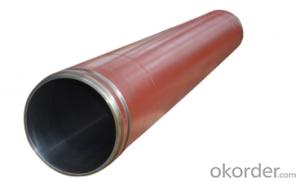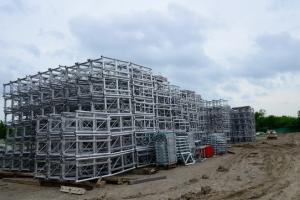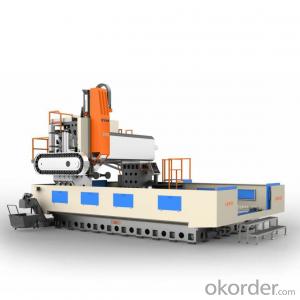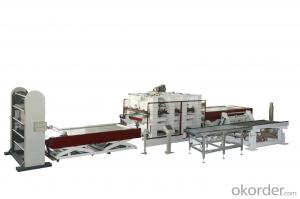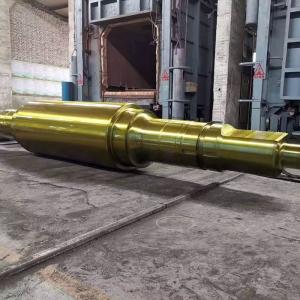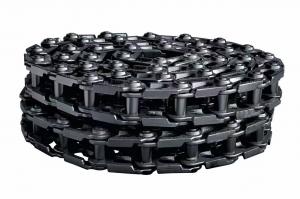DELIVERY CYLINDER(SANY ) I.D.:DN200 CR. THICKNESS :0.25MM-0.3MM LENGTH:1946MM
- Loading Port:
- Shanghai
- Payment Terms:
- TT OR LC
- Min Order Qty:
- 2 pc
- Supply Capability:
- 1000 pc/month
OKorder Service Pledge
Quality Product, Order Online Tracking, Timely Delivery
OKorder Financial Service
Credit Rating, Credit Services, Credit Purchasing
You Might Also Like
Packaging & Delivery
| Packaging Detail: | wooden case, seaworthy packing |
| Delivery Detail: | 15 days |
Specifications
Concrete Pump Delivery Cylinder DN230*2100
1. Capacity: 60,000~80,000cbm
2. Size: DN180, DN200, DN230..
4. Brand: PM, Sany,ZM
1. Material: C45
2. quenching and tempering to improve the hardness to HB241-280
3. inner wall chrome thickness is 0.25-0.30mm, hardness HV820-900.
4. Brand: SCHWING, PM, SANY, KYOKUTO, CIFA
5. Capacity: 60,000~80,000cbm
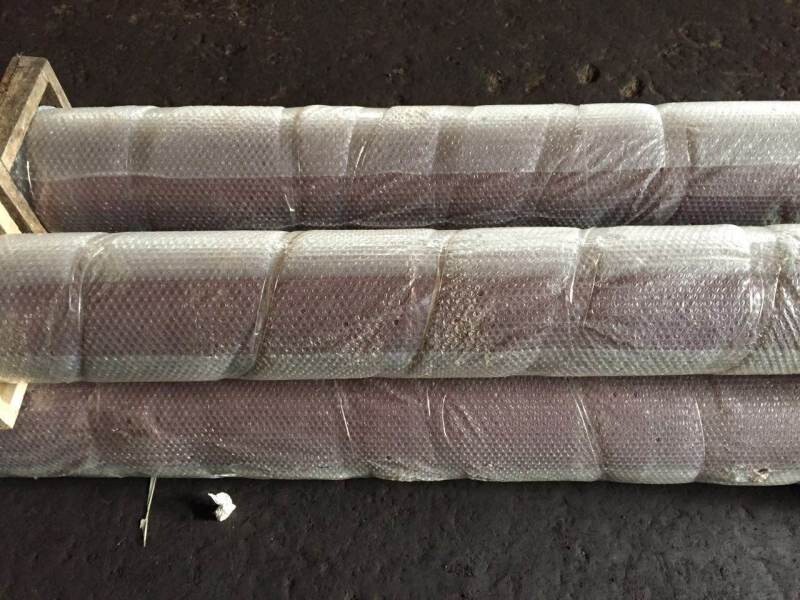


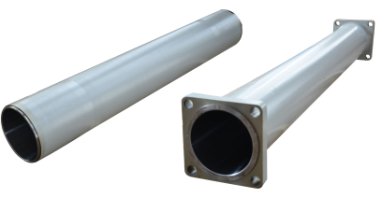
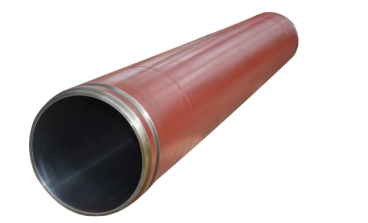
- Q:What are the common issues that require replacement of concrete pump spare parts?
- Common issues that often require the replacement of concrete pump spare parts include wear and tear from continuous use, damage caused by debris or foreign objects in the concrete mix, corrosion due to exposure to harsh chemicals or weather conditions, and malfunctioning or worn-out components such as seals, valves, or pistons.
- Q:How can a faulty concrete pump S valve affect the concrete flow?
- A faulty concrete pump S valve can affect the concrete flow by causing disruptions, blockages, or uneven distribution of the concrete. The S valve is responsible for controlling the direction of the concrete flow, and when it malfunctions, it can lead to decreased or inconsistent flow rates. This can result in delays in the construction process, poor concrete quality, or even damage to the pump system.
- Q:How often should concrete pump hydraulic oil coolers be inspected and maintained?
- Concrete pump hydraulic oil coolers should be inspected and maintained regularly, ideally on a monthly basis or as recommended by the manufacturer. Regular inspections and maintenance ensure optimal performance and help identify any potential issues or damage that may affect the efficiency and lifespan of the equipment.
- Q:Do concrete pump spare parts come with a warranty?
- Yes, concrete pump spare parts do come with a warranty. The warranty period may vary depending on the manufacturer and the specific part being purchased. Generally, reputable manufacturers and suppliers offer warranties on their spare parts to provide assurance to customers about the quality and reliability of the product. It is important to carefully review the terms and conditions of the warranty to understand what is covered and for how long. If any defects or issues arise during the warranty period, customers can typically get a replacement or have the part repaired at no additional cost.
- Q:What are the causes of pipe blockage in concrete pump?
- Therefore, in the JGJ/T10-95 "concrete pumping construction technical regulations," stipulated that the sand through the 0.315mm sieve shall not be less than 15%.
- Q:What are some common issues with concrete pump hoses and how can they be prevented?
- Concrete pump hoses can encounter various problems such as blockages, leaks, and premature wear. To avoid these issues, it is essential to adhere to proper maintenance and usage practices. 1. Blockages: Blockages can occur when concrete or debris hardens inside the hoses. Thoroughly cleaning the hoses after each use is crucial to prevent blockages. Flushing the hoses with water or using a cleaning sponge ball effectively removes any residue or build-up. Additionally, using the correct size and length of hose for the job reduces the risk of blockages. 2. Leaks: Leaks may result from wear and tear, improper connections, or hose damage. Regularly inspecting the hoses is vital to detect any signs of leakage. Any leaks detected should be promptly repaired or replaced. Properly connecting and securing the hose fittings also helps prevent leaks. 3. Premature Wear: Over time, concrete pump hoses can wear out due to factors such as abrasion, bending, and exposure to harsh chemicals. Handling the hoses with care and avoiding dragging them on rough surfaces is important to prevent premature wear. Using protective sleeves or guards provides additional protection against abrasion. Regularly inspecting the hoses for signs of wear and replacing them when necessary is essential. 4. Storage Practices: Improper storage of concrete pump hoses can cause damage and reduce their lifespan. Storing the hoses in a clean and dry environment away from direct sunlight and extreme temperatures is recommended. Properly coiling the hoses and avoiding sharp bends or kinks helps maintain their integrity. 5. Pressure Management: Exceeding the recommended pressure limits can result in hose bursts or failures. Ensuring that the concrete pump operates within the specified pressure range is crucial. Regularly inspecting the pressure gauges and monitoring the pumping process aids in preventing over-pressurization. By adhering to these preventive measures, conducting regular inspections, and performing necessary maintenance, the common issues associated with concrete pump hoses can be minimized. This, in turn, leads to improved performance and increased longevity of the hoses.
- Q:Can concrete pump spare parts be coated with anti-corrosion or anti-wear coatings?
- Yes, concrete pump spare parts can be coated with anti-corrosion or anti-wear coatings. These coatings provide an additional layer of protection to the spare parts, helping to prevent corrosion and wear caused by the harsh operating conditions and abrasive materials encountered in concrete pumping. The coatings are typically made from materials such as epoxy, polyurethane, or ceramic, which have excellent resistance to corrosion and wear. The application of these coatings can significantly extend the lifespan of concrete pump spare parts, reducing the need for frequent replacements and resulting in cost savings for operators. Additionally, the anti-corrosion and anti-wear coatings can improve the overall performance and efficiency of the concrete pump, ensuring smooth and reliable operation.
- Q:Are there any specific training or certifications required for handling and installing concrete pump spare parts?
- Yes, specific training and certifications are required for handling and installing concrete pump spare parts. Individuals working in this field usually undergo specialized training programs to gain a comprehensive understanding of the equipment, safety protocols, and proper installation techniques. Additionally, some manufacturers or organizations may offer certifications to ensure that professionals have met certain industry standards and possess the necessary skills to handle and install concrete pump spare parts effectively and safely.
- Q:Are there any specific guidelines for the disposal of packaging materials of concrete pump spare parts?
- Packaging materials of concrete pump spare parts have specific guidelines for disposal. It is advised to adhere to local waste management regulations and authorities' guidelines. To begin with, it is essential to separate the various packaging materials, such as cardboard boxes, plastic wraps, foam inserts, and other materials used for packaging the spare parts. This will facilitate efficient recycling or appropriate disposal of each material. Cardboard boxes can usually be recycled by flattening them and placing them in designated recycling bins. Plastic wraps should also be separated and discarded in specific plastic recycling bins. Foam inserts, commonly used for spare parts protection, may not be recyclable in all areas, so specific recycling instructions should be checked. If recycling is not possible, foam inserts can be disposed of in regular waste bins. Before disposal, it is important to ensure that all packaging materials are free from any residual concrete or other hazardous substances. Any contamination should be cleaned or removed properly to prevent environmental pollution. If the packaging materials cannot be recycled or disposed of through regular waste management methods, it is recommended to contact local recycling centers or waste management facilities to inquire about specific disposal options. They may offer guidance or accept these materials for specialized processing or disposal. Overall, responsible waste management practices should be prioritized, and compliance with local authorities' specific guidelines is crucial to ensure proper disposal of packaging materials for concrete pump spare parts.
- Q:How often do I need to replace concrete pump spare parts?
- The frequency of replacing spare parts for concrete pumps depends on several factors, such as the quality of the parts, how often the pump is used, and the maintenance practices followed. In general, if you use high-quality spare parts, they can last longer and won't need to be replaced as often. However, if the pump is used extensively or in harsh conditions, the spare parts may wear out more quickly. To ensure that your concrete pump performs well and lasts a long time, it's important to stick to a regular maintenance schedule. This includes checking the spare parts for any signs of damage, monitoring their performance, and replacing them when necessary. It's a good idea to consult the manufacturer's guidelines or get professional advice to determine how often you should replace the spare parts for your concrete pump. Remember, if you neglect proper maintenance or use low-quality spare parts, you may need to replace them more frequently, which can be expensive and disrupt your construction projects. So, it's worth investing in high-quality spare parts and following a diligent maintenance routine to maximize the lifespan of your concrete pump and minimize the need for replacements.
1. Manufacturer Overview |
|
|---|---|
| Location | |
| Year Established | |
| Annual Output Value | |
| Main Markets | |
| Company Certifications | |
2. Manufacturer Certificates |
|
|---|---|
| a) Certification Name | |
| Range | |
| Reference | |
| Validity Period | |
3. Manufacturer Capability |
|
|---|---|
| a)Trade Capacity | |
| Nearest Port | |
| Export Percentage | |
| No.of Employees in Trade Department | |
| Language Spoken: | |
| b)Factory Information | |
| Factory Size: | |
| No. of Production Lines | |
| Contract Manufacturing | |
| Product Price Range | |
Send your message to us
DELIVERY CYLINDER(SANY ) I.D.:DN200 CR. THICKNESS :0.25MM-0.3MM LENGTH:1946MM
- Loading Port:
- Shanghai
- Payment Terms:
- TT OR LC
- Min Order Qty:
- 2 pc
- Supply Capability:
- 1000 pc/month
OKorder Service Pledge
Quality Product, Order Online Tracking, Timely Delivery
OKorder Financial Service
Credit Rating, Credit Services, Credit Purchasing
Similar products
New products
Hot products
Related keywords

